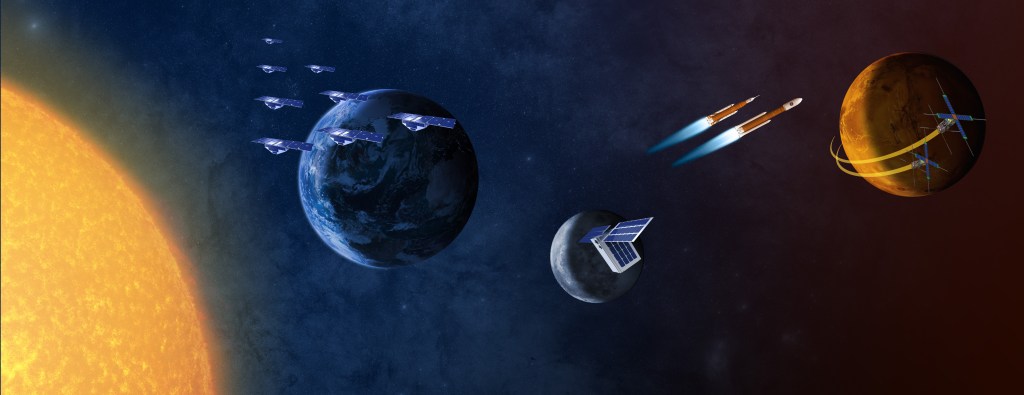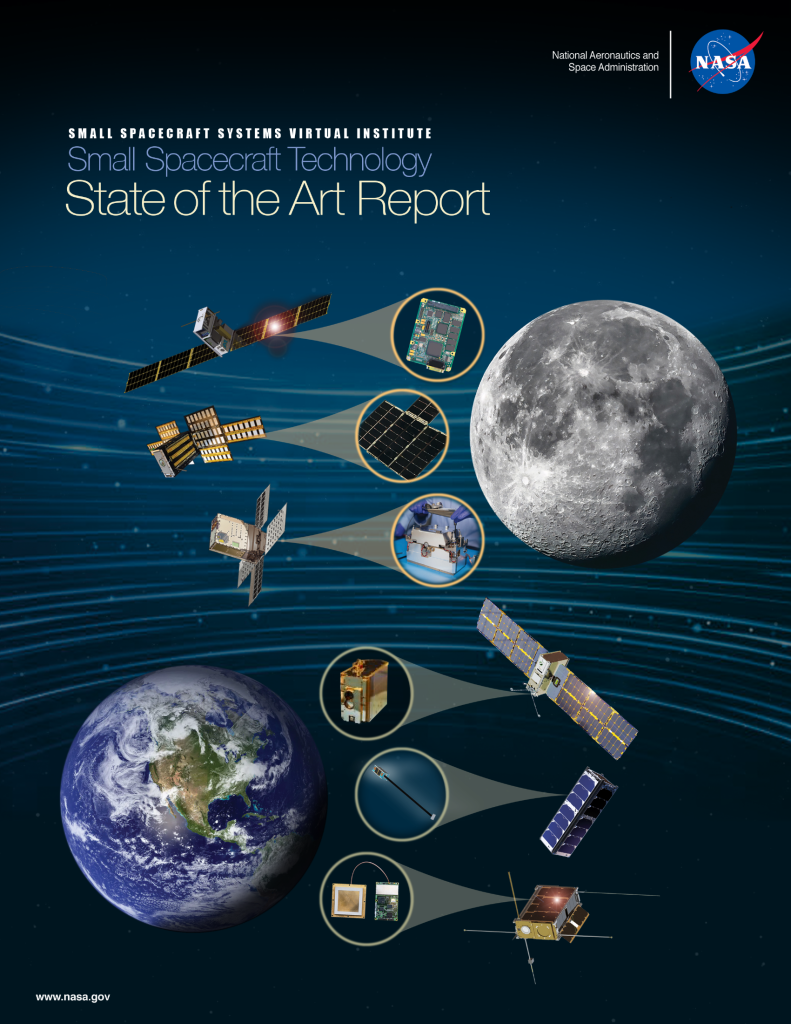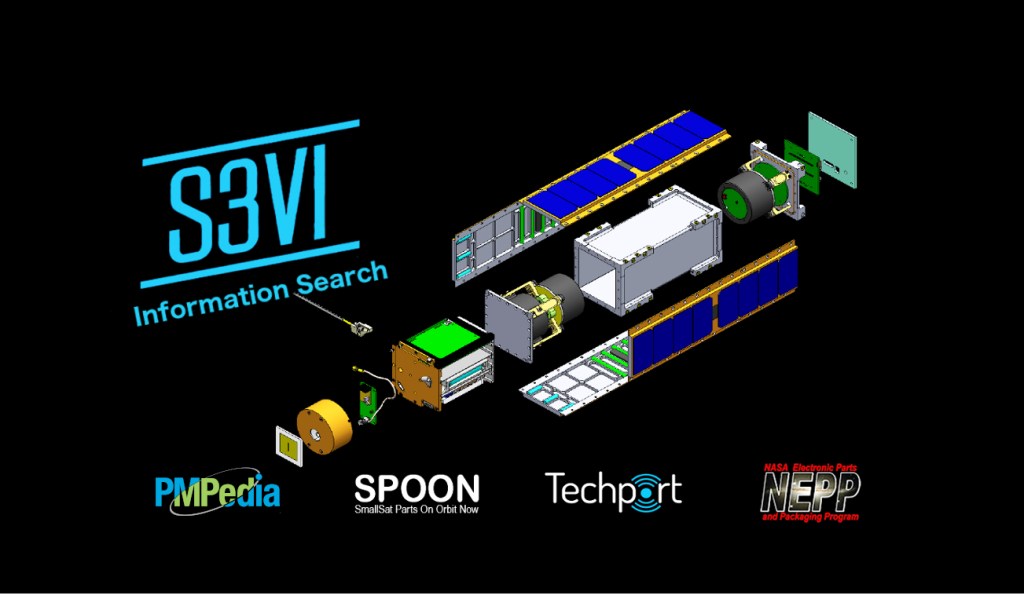NASA SmallSat Technology Partnerships – 2021 Technology Exposition
Co-Hosted by
Small Spacecraft Technology Program & Small Spacecraft Systems Virtual Institute
Agenda
Download the agenda
May 24, 2021
Hosted Virtually over WebEx
Please email the S3VI for details
Welcome and Perspectives
9:00AM
- Welcome and Introduction
James J. Cockrell
Chief Technologist, Small Spacecraft Technology Program - Space Technology Mission Directorate (STMD)
Christopher E. Baker
Program Executive, Small Spacecraft Technology Program and Flight Opportunities Program - Science Mission Directorate (SMD) SmallSat Technology
Florence W. Tan
Deputy Chief Technologist, Science Mission Directorate,
Chair, Small Spacecraft Coordination Group - Human Exploration and Operations Mission Directorate (HEOMD)
Andres Martinez
Program Executive, Advanced Exploration Systems (AES),
Human Exploration and Operations Mission Directorate (HEOMD)
SmallSat Technology Partnerships Presentations
9:20AM
- Move to Talk, Talk to Move: Tightly Integrated Communication and Controls for Coordinated Swarms of Small Spacecraft – [2018]
Dr. Qi Han
Colorado School of Mines
Tight integration of communication and controls to enable a network of self-organizing small spacecraft to collaboratively monitor time-varying, distributed phenomena. - Active Thermal Architecture for Cryogenic Optical Instruments (ATACOCI) – [2018]
Lucas Anderson, Dr. Charles Swenson
Utah State University
Advanced thermal control system consisting of a deployable solar radiator, rotational fluid joint, and thermal isolation system for miniature cryogenically-cooled instruments hosted on CubeSats. - Angles-only Absolute and Relative Trajectory Measurement System (ARTMS) – [2019]
Adam Koenig, Justin Kruger, Dr. Simone D’Amico
Stanford University
Software enables spacecraft to estimate orbits of external objects based on visible bearing angle measurements. - Autonomous Nanosatellite Swarming using Radio-Frequency and Optical Navigation (ANS) – [2019]
Kaitlin Dennison, Dr. Simone D’Amico
Stanford University
Distributed Dynamics, Guidance, Navigation and Control system with cm-level RF and optical relative nav with efficient on-orbit propagation of satellite relative motions. Enables swarms/clusters to cooperate for wide range of Earth or planetary observations.
SmallSat Technology Partnerships Presentations
10:50AM
- Miniature Optical Communications Transceiver (MOCT) – [2016]
Dr. John Conklin
University of Florida
An optical communication system consisting of a software defined pulsed modulator, laser system, and avalanche photodetection system designed for SmallSat/CubeSat communication. - SPRINT: Scheduling Planning Routing Intersatellite Network Tool – [2018]
Juliana Chew, Mary Dahl, Dr. Kerri Cahoy
Massachusetts Institute of Technology
Open-sourced software tool to plan and schedule remote observations, data crosslink, and downlink activities. Enables large constellation of resource-constrained SmallSats to maximize data downlink for global, real-time science. - High Specific-impulse Electrospray Explorer for Deep-space (HiSPEED) – [2018]
Dr. Paulo Lozano
Massachusetts Institute of Technology
A multi-staged ion Electrospray Propulsion System extends thruster lifetime and enables deep-space exploration with small satellites. - Distributed multi-GNSS Timing and Localization system (DiGiTaL) – [2016]
Vince Giralo, Dr. Simone D’Amico
Stanford University
Multi-GNSS unit for navigation and timing enables decentralized relative navigation with centimeter accuracy over separations up to hundreds of km. - Development of New Low-Resource Magnetometers for Small Satellites – [2016]
Dr. Mark Moldwin
University of Michigan
Reduced SWAP+C magnetometer mounts internal to CubeSats without requiring external booms. Uses precision AC and DC magnetic measurements and novel algorithms to achieve high precision.
SmallSat Technology Partnerships Presentations
12:40PM
- Smoothing Based Relative Navigation & Coded Aperture Imaging – [2016]
Dr. Timothy Setterfield
Jet Propulsion Laboratory
Time-windowed, efficient smoothing software based on coded aperture visible imaging to estimate relative poses and volocities between spacecraft. - Distributed Attitude Control and Maneuvering for Deep Space SmallSats – [2018]
Steven Pugia, Dr. Alina Alexeenko
Purdue University
Combines film-evaporation MEMS tunable array (FEMTA) technology with microscale fluid surface tension effects; electrothermal shutters enable low-power tunable thrust and thermal control. - Nano-Enabled Space Power System – [2016]
Dr. Ryne Raffaelle
Rochester Institute of Technology
Nanomaterial components for power systems (quantum dot/well solar cells; CNT wire harnesses; CNT-enhanced Li-ion batteries) increase capabilities at reduced weight. - Omnidirectional Inter-satellite Optical Communicator – [2016]
Dr. Ozdal Boyraz
University California of Irvine
A high bandwidth, full duplex, omnidirectional optical communication module for optical communication of spacecraft constellations at 100’s km separations.
2:00PM
- Leverage NASA Patented Technology for Your Business
Jay Singh
Technology Transfer Office
Learn how to use NASA patented technologies to enhance your business.
2:20 – 2:25PM
- Closing remarks
James Cockrell
Chief Technologist, Small Spacecraft Technology Program





























